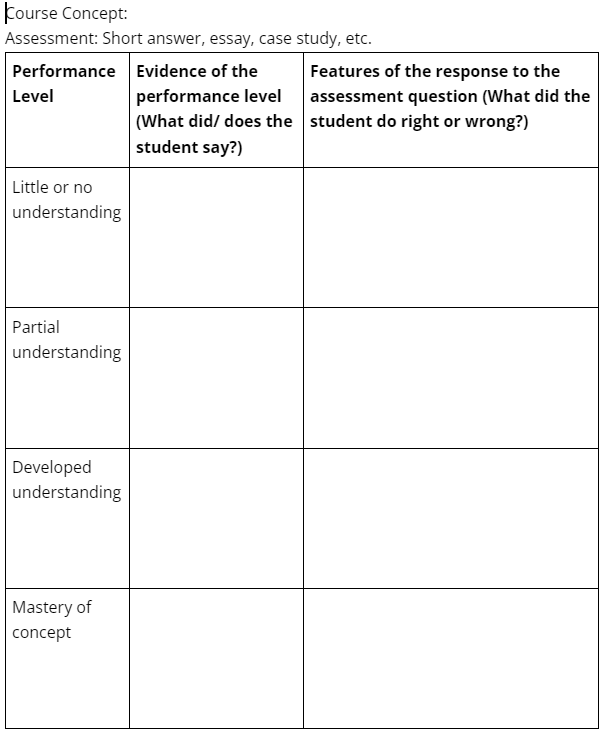
Conceptual Ladders: Steps to Understanding through Writing
When students recall the definition of a concept or apply a formula or principle to a problem, we are presented with a challenge. While their answers may be correct, how do we know whether they have a developed sense of the concept or can simply provide solutions in clearly defined contexts? Similarly, while students may recall learning about a concept, method, or tool in a prior course, is remembering a topic the same as conceptual understanding? This blog post provides a tool to help instructors recognize the stages in which students move from conceptual novices to a mature understanding of course content, the conceptual ladder.
What is Conceptual Understanding?

In mathematics education, instructors distinguish between procedural fluency and conceptual understanding. Procedural fluency is evidenced by students' ability to solve clearly defined problems by applying a defined process or formula. The next level of performance moves beyond procedural know-how to conceptual know-why. Conceptual understanding suggests an awareness of a bigger picture; students with conceptual understanding can transfer their knowledge to new contexts and can explain the thinking processes behind their new applications of prior knowledge.
When students use the quadratic formula to solve equations, repeating it through similar problems allows them to build skills, increase their pace, and catch minor errors. Asking students to apply the quadratic formula using word problems or in novel contexts presses them to consider when, how, and why the procedure offers explanatory power. When students are asked to explain their reasoning and application, it can help to confirm learning transfer. Of course, students' conceptual and procedural knowledge operate and develop together, but written assignments allow instructors to see how and where students are correctly applying their knowledge beyond an algorithmic understanding.
The Conceptual Ladder
Conceptual ladders are a tool for unpacking and clarifying both the aspects of mature understanding and the potentially incomplete knowledge students might reveal as they learn. By describing common stages in conceptual learning, instructors can design tasks that require students to do more than simply define or apply concepts and ask students to consider new applications. A conceptual ladder can also be used retrospectively for examining students' responses to writing assignments. If common patterns of error emerge in students' responses to a task, the ladder can differentiate where students go off course. Overapplication of a generalization, ignorance of exceptions, or misconceptions may emerge in the analysis of where students go wrong.
In this template, the ladder moves down to indicate deeper understanding. Some instructors might reverse the order to indicate growth in understanding or development.

In medical laboratory sciences, students learn lab processes and data procedures to guide diagnosis and treatment by healthcare professionals. In addition to assignments that guide students through analytical techniques, instructors have incorporated an opening task where students are presented with two microscope samples without labels and contexts and are asked to provide explanations. While most students can identify what each slide shows competently (partial understanding), those with greater conceptual knowledge can consider potential relationships between the two representations. Because medical diagnoses are typically complex, conceptual understanding is a critical learning component.
While many instructors are familiar with conceptual inventories and learning taxonomies, Mature understanding often implies content knowledge (definitional understanding), application (procedural understanding), relationships to other concepts (contextual understanding) and transfer to novel contexts (strategic understanding). Asking students to describe their problem-solving strategies (metacognitive reflection) can help students understand both what they know and what they can improve.
Further Support
See the Teaching with Writing pages and our Teaching Resources for more good advice. Our WAC program hosts the popular Teaching with Writing event series. Each semester, this series offers free workshops and discussions. Visit us online and follow us on Twitter @UMNWriting. Contact us to schedule a phone, email, or face-to-face teaching consultation.
- Log in to post comments